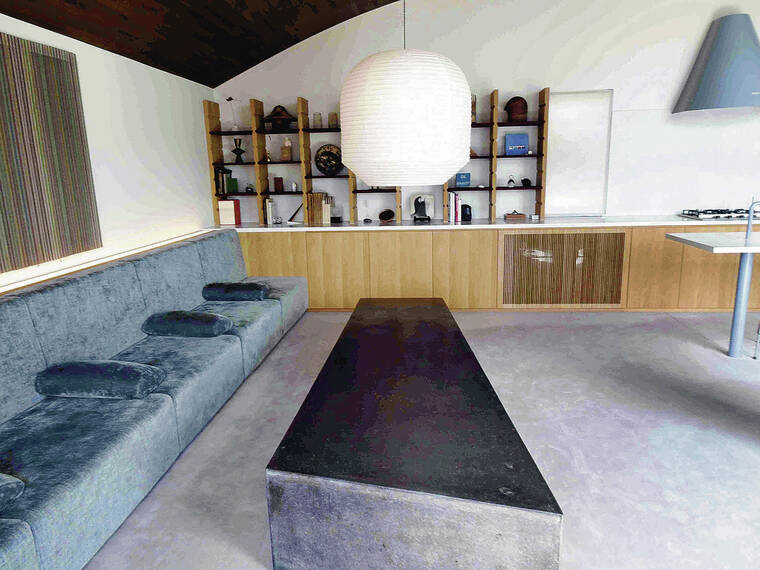By None
OSAKA, Japan >> Through various collaborative efforts, traditional Japanese crafts such as washi (Japanese paper), textiles and urushi (lacquer) are being incorporated into modern construction.
Nara prefecture-based Nakagawa Masashichi Shoten, which produces traditional crafts and household goods, and Hotta Carpet Co., a wool carpet manufacturer in Osaka prefecture, established Tactile Material Co. on March 1.
The new company develops construction materials made using traditional craft techniques, while a consortium of traditional dyeing and weaving companies, and local governments are jointly developing a sales channel.
Tactile Material Co. is working with seven traditional craft manufacturers to produce such materials as wallpaper woven with cotton and other natural threads, crafted by Kojima Orimono Co., a textile company in Kyoto prefecture, and urushi paint produced by Shitsurindo in Fukui prefecture.
“There is a limit to what we can do to support the traditional crafts if we stick to household items,” said Aya Sengoku, president of Nakagawa Masashichi Shoten. “We decided to expand our business into construction materials.”
Tactile Material opened a hotel in March, Tactile House Osaka, where guests can experience the comfortable environment created by materials crafted using traditional techniques.
Taki Washi Paper Inc., a partner company in Fukui, made Echizen washi by hand for shoji doors (sliding doors), mixing in wool to give it a unique feel.
“I want to convey the appeal of construction materials made with craft-making techniques that can make our lives more comfortable,” said Masaya Hotta, president of both Tactile Material and Hotta Carpet. “I also want to invigorate traditional industries.”
Support from local governments
In 2021, the Kyoto government established Silk Textiles Global Promotion Consortium alongside Kyoto’s Nishijin textile, Kyo-yuzen dyeing and Tango textile producer associations. The consortium produced a fabric and textile catalog for architectural offices and design companies.
The catalog includes textile samples; one fabric is made using hikizome, a special Kyo-yuzen brush-dyeing technique, and crepe-like Tango chirimen. The catalog illustrates how items produced in the area are used in fusuma doors (a sliding door distinct from shoji), wallpaper and upholstery.
Fukui’s government subsidizes newly built and renovated houses that include Fukui wood traditionally crafted in the prefecture.
It also offers up to 100,000 yen (about $695) to help cover the cost of Echizen ceramic roof tiles and Echizen washi used in fusuma doors and wallpaper. From fiscal 2021 to 2023, Fukui also provided subsidies to commercial buildings and restaurants.
In July 2023, for example, Fukui Phoenix Hotel used Echizen washi on the ceiling and walls of a renovated suite and Wakasa agate for its room number plate. A total of seven crafts made by master craftspeople were incorporated in the renovation.
The lobby of the hotel displays an exhibit of traditional crafts. “We have created a place where visitors can see and touch traditional Fukui prefecture crafts up close,” said a hotel employee.
